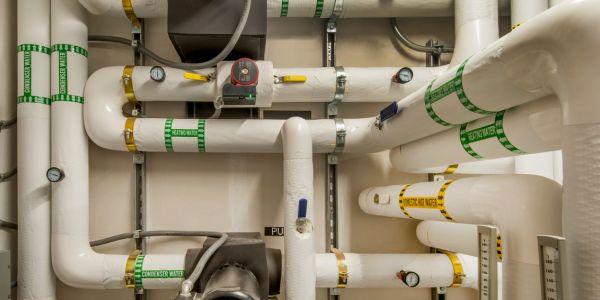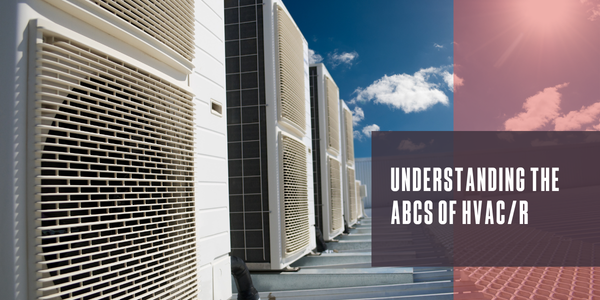Where plumbing meets roofing

By Kevin Morris, TUBOS.
Plumbing vent pipes are an important part of the building’s drainage system, and the building code requires that pipes extend vertically several inches above the roof.
Plumbing requirements
A plumbing vent pipe, or vent stack, is a pipe that runs from plumbing fixtures up through the building’s roof and is a critical component of the building plumbing system. Its primary purpose is to enable the building’s plumbing system to properly drain, and more importantly to allow pressure to escape from the plumbing system as harmful sewer gases make it difficult for water to move through the lines.
Drainage happens because the vent pipe allows air in and stops a vacuum from being created at the fixtures. Sewer gases are a component of waste, and a safe standard of practice is to vent them outside to the roof. This typically is done so dangerous sewer odors cannot affect building inhabitants. Some roofs will have one plumbing vent pipe that connects to the building’s entire plumbing system and other buildings have numerous plumbing vents. Vent pipe materials range from cast iron, galvanized, copper, acrylonitrile butadiene styrene (ABS and polyvinyl chloride (PVC).
The International Plumbing Code (IPC) requires plumbing vent pipes to extend vertically at least 6-inches (152 mm) above a roof, per section 905.5, “Vent Connections and Grades,” however the minimum height requirement can vary by state, so roofers should always check the local requirements. In addition, vent pipes must be located at least 12-inches (305 mm) away from a vertical surface. In Northern climates and locations where snowfall is common, vent pipes must be at least 2-inches (51 mm) in diameter and 12-inches (305 mm) inside an insulated area of a building before extending through the roof. Vents in these locations also should extend 24-inches (610 mm) above the surface of the roof.
In addition to following codes and standards, design/construction professionals need to keep their eyes open for features unique to each project. For example, it is not uncommon for roofing contractors to encounter cracked, missing or covered-up vent pipes. Particularly during the re-roof process, it is important to inspect the system for trouble spots or installation errors of the previous roof system. Errors must be corrected before vent pipe extensions are installed.
Reroofing issues
When a commercial building is being re-roofed, typically additional insulation is added to the roof to come up to compliance with R-Value requirements as set by the International Energy Conservation Code (IECC) or the specific state in which the building is located, as well as the specific climate zone in which the building is located. Depending on your location, the minimum insulation R-Value requirements for non-residential applications above the roof deck ranges from R-15 to R-40. As insulation is added, vent stacks typically fall out of compliance with the vent stack height requirement over the roof deck. When this occurs, the vent stacks must be extended to stay code compliant.
Extension methods
There are two primary methods that roofers have traditionally extended vent pipes: the stainless-steel method and the ‘no-hub’ method.
The first option begins with a rolled stainless-steel sleeve, typically made from 22 Ga. stainless, that is inserted into the existing vent pipe, extending several inches above the top of the vent pipe. Caulk is applied to the top of the existing pipe, and a PVC pipe is then placed on top of the pipe, with the stainless insert inside, acting as a splice sleeve. Any exposed portion of the stainless steel is notched and folded down over the top of the new PVC pipe extension. This method is good for lead boot applications, but it takes 30 minutes or longer to make and install a stainless sleeve by an experienced applicator, and the materials cost nearly $25 - $30 per extension.
The second option is to attach a no-hub coupling to the existing vent pipe and tighten to 60 inch-pounds of torque, which is essential to prevent leaks. Next, a piece of PVC pipe is measured and cut to the specified height and secured on top of the existing vent pipe with the no-hub, again secured again with 60 inch-pounds of toque. A larger lead boot (typically an additional $8 - $10 each is required to fit over the PVC pipe/no-hub, with the excess lead stuffed into the smaller PVC pipe. Larger thermoplastic boots can also be used depending on the roof cover used. This method typically takes an experienced applicator about 20 minutes to install, and the materials cost about $25 - $28 per extension.
A better option
A newer and better option is available, using proprietary technology, called a Tubos Vent Pipe Extension. Tubos Vent Pipe Extensions are 28-inch-long PVC pipes, designed with an internal 6-inch splice sleeve on each end. Pipes are extended by inserting the splice sleeve into the existing pipe, caulking the edge to prevent sewer gas from escaping into the roof assembly and finished with a pipe boot secured to the extended pipe and roof deck per the manufacturer’s recommendations. The installation takes only a few minutes to complete – typically less than five minutes – and does not require any special tools or a high level of applicator experience. In addition, Tubos units are available and compatible with the most common sizes of cast iron or PVC vent pipes, i.e., 2-, 3-, 4- and 5-inches, and each unit can be used to extend two vent stacks. Tubos Extensions cost around $25 each and with the quick installation process, the labor savings can be significant.
More important, Tubos units are made specifically for extending vent pipes. The internal splice-sleeve fits snuggly down the inside of an existing vent stack. The lip of the Tubos unit over the splice-sleeve then sits perfectly on top of the existing pipe. PVC or ABS plastic tubes purchased at the hardware store typically do not fit perfectly over the vent stack and cannot be made with an internal splice sleeve to fit a vent pipe, which means that regardless of the other application method, the extended pipe is really just ‘balanced’ on top of the old vent stack.
"Tubos has invented an indispensable product that fills a huge void in the roofing industry. We like the product so much that it has become a permanent line item in our project specifications,” said Robert Whitcomb, AIA, RRC, Forensic Architect and Registered Roof Consultant.
Justin Kosher, president of the Polyisocyanurate Insulation Manufacturers Association echoed that comment, stating that “this seems like a perfect solution for reroofing projects that need to increase insulation to comply with energy code requirements."
Contractors love Tubos
But it’s not just the design or specifier community that likes the Tubos products. Contractors too like them for the productivity benefits that they offer. For example they are stocked by roofing distributors so they can be delivered to the jobsite, so contractors don’t have to take crew members off the roof and send them to the hardware store to pick up the various components to cobble together an extension, which also saves valuable labor.
“Tubos vent pipe extensions are an incredible time saver for re-roofing and service crews. Regardless of roof type, Tubos are the best pipe extensions a roofing contractor can install. The fact that the extension has the same exterior diameter as the existing pipe is extremely beneficial when using liquid applied flashings. Stocking a few cases of each Tubos size is a quick and easy way to ensure faulty pipe extensions don’t come back to haunt you,” said Brandon Adreon, director of commercial operations for Chinook Building Envelope Services.
"Tubos is an excellent product that we use on many of our reroof projects. Whether we are increasing insulation thickness to meet additional R-value requirements, adding tapered insulation or pouring a new lightweight insulating concrete deck, there is always a need to raise the height of existing vent pipes. Tubos is a quick, easy and inexpensive way to raise vent pipes that will not leak and meets roof consultant and the membrane manufacturer's requirements,” said Brent McFarlin, vice president of operations for KPost Company.
“We do a lot of tapered insulation installations which almost always requires that the vent pipes be extended to a higher elevation to accommodate the taper and this is a lot easier, less expensive and faster than the old method of a PVC coupling which usually also required the use of a larger lead stack,” said Darrick Gockerell, president of PSI Roofing & Restoration. “The roofing consultants we have interacted with on projects that required extension of the vent stack also approved it quickly as they also see it as a way to save their clients’ money and still maintain a high-quality detail.”
Geoffrey Hagan, LEED AP and environmental solutions manager at Tecta America Central Florida agrees. "Every commercial and/or residential re-roof contractor has run into a sub-eight-inch VTR scenario, broken or as is. Before Tubos you had to enlist the plumber or get creative with an exterior sleeve, not ideal. You cannot do a re-roof or recover without them."
With the continued shortage of roofing labor, and the pressure of being profitable and finishing each project on schedule, Tubos offers an economical solution to a problem that exists on virtually every re-roofing project across the nation.
Learn more about TUBOS in their Coffee Shop directory or visit tubos.biz.























Comments
Leave a Reply
Have an account? Login to leave a comment!
Sign In